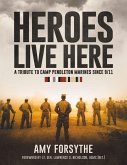In December of 1812, after having their peace offer rebuffed, the British cabinet decided to take aggressive measures against the United States. The Admiralty sent Rear Admiral George Cockburn RN with a squadron of ships of the line and frigates to shut down the American privateers, protect British merchant trade, blockade American ports, destroy the U.S. economy and end the war. The Admiralty also sent two fully equipped battalions of Royal Marines with their own artillery and rocket companies, supported by the army regiments who could be spared from the war with Napoleon. The two battalions of marines were soon sent to defend the borders of Upper and Lower Canada, where they took part in winter warfare and amphibious assaults on the American targets on the inland lakes. As the war with Napoleon ended, thousands of Britain's veteran soldiers were sent to North America and began to turn the tide of war. The Royal Marines were reformed, and with additional ships marines, Royal Navy seamen and Colonial Marines saw service in nearly every region of the conflict. Alexander Craig has written this book from the point of view of the Royal Marines and the other British and Canadian forces that served alongside them. The Chesapeake raids, the battles of LaColle Mill, Plattsburgh, Oswego, Big Sandy Creek, Bladensburg, Washington, North Point, Baltimore and the major battles in the New Orleans campaign are all covered extensively, using firsthand accounts of serving officers, soldiers and other eyewitnesses.








